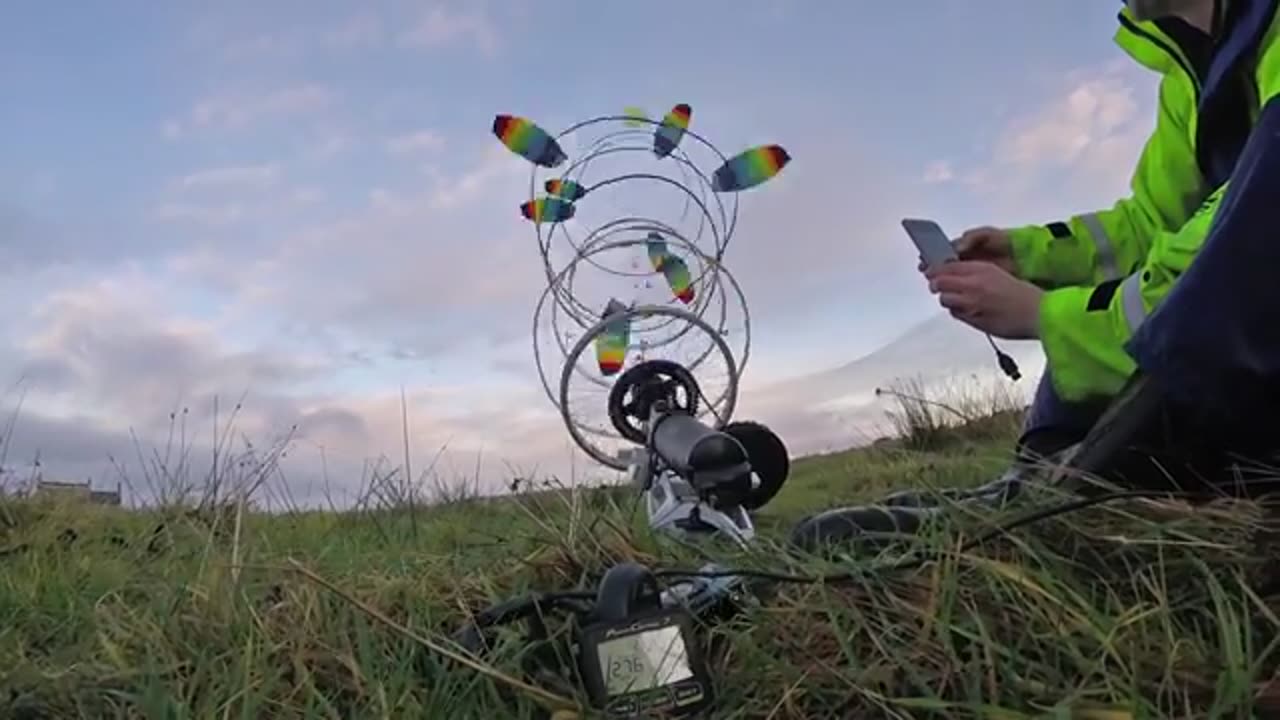Premium Only Content

3 stack Daisy flying wind turbine 608W test
The development of airborne wind energy systems is a critical step towards meeting the world's renewable energy needs. These systems harness wind energy at high altitudes, where wind speeds are stronger and more consistent. One such system, the 3 stack Daisy Flying Wind Turbine, has recently undergone testing with impressive results.
During the testing phase, the 3 stack Daisy Flying Wind Turbine was able to output 608 watts of power, making it a highly efficient source of renewable energy. The system consists of three small turbines stacked on top of each other and tethered to the ground. As the wind passes over the turbines, they spin and generate electricity, which is transmitted back to the ground via the tether.
One of the major advantages of the airborne wind energy system is its flexibility. Because it is not limited by the size and weight constraints of traditional wind turbines, it can be quickly and easily deployed to remote or hard-to-reach locations. This makes it a great option for powering off-grid communities, disaster relief efforts, or military operations.
The 3 stack Daisy Flying Wind Turbine is also highly scalable, meaning that it can be adapted to meet the needs of different energy users. By adding more turbines to the stack, the system can generate even more power, making it a great option for larger-scale energy production.
Overall, the successful testing of the 3 stack Daisy Flying Wind Turbine is a major step forward in the development of airborne wind energy systems. With ongoing research and development, these systems have the potential to become a major player in the global transition to clean energy.
-
 LIVE
LIVE
Man in America
6 hours agoEXPOSED: How Militaries Worldwide Are Engineering DEPOPULATION w/ Todd Callender
1,527 watching -
 DVR
DVR
megimu32
3 hours agoON THE SUBJECT: Gaming, Beats & Rumble MUSIC with Lumpypotatox2 🎮🎶
15.7K6 -
 4:42:30
4:42:30
Right Side Broadcasting Network
1 day agoLIVE REPLAY: President Trump Gives Commencement Address at University of Alabama - 5/1/25
122K17 -
 16:58
16:58
T-SPLY
8 hours agoDems’ Bad News: El Salvador Rejects Abrego, Democrats Fume!
51.1K45 -
 18:56
18:56
Nick Shirley
4 hours ago $1.22 earnedAsking People About Trump’s First 100 Days… How are Americans Feeling?
7.02K12 -
 9:50
9:50
Melonie Mac
6 hours agoXbox raised their prices
7.42K24 -
 LIVE
LIVE
BlackDiamondGunsandGear
54 minutes agoEDC for 2025 (Probably not a SIG)
54 watching -
 LIVE
LIVE
DLDAfterDark
1 hour agoDLD Live! Beat Rifle & Pistol Combo for 2025!
116 watching -
 LIVE
LIVE
Precision Rifle Network
1 day agoS4E14 Guns & Grub - Do Matches Cost Too Much?
204 watching -
 1:44:16
1:44:16
Glenn Greenwald
5 hours agoMike Waltz is Sacked In Cabinet Shuffle as War with Iran Looms; Matt Walsh Tells Tucker Carlson Gay Adoption Is an Abomination | System Update #447
104K75